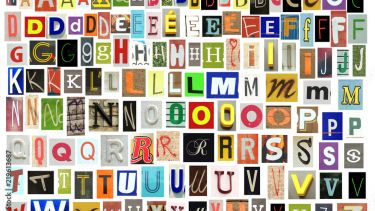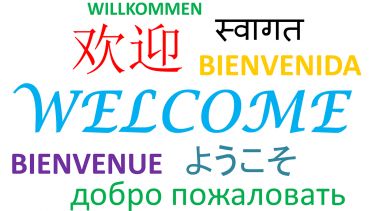Writing Systems #6 – Letters!
And now we have reached the final chapter in this little miniseries about writing systems! Today I’d like to say a little bit about the concept of the ‘letter’…
So, we have done the different kinds of writing systems quite a lot and looked a lot at writing in general, but we have not really talked about one of the smallest units within the system of writing, and that is the concept of the letter. Now, the reason why I call this a concept is that, well, it’s not actually a meaningful unit of linguistic significance – that is to say it is just a general descriptive term that is not based on a particular practice. The likes of Katakana, Gurmukhi, Hanzi, Latin, and Arabic all have what people describe as letters, but how can they be so when they all represent different units in linguistic terms? This means that a letter is a phoneme, as well as a syllable, as well as a morpheme, as well as an underspecified consonant… This is all a bit too much considering phonemes build to create syllables and syllables build generally to create morphemes. If the approach of ‘letter’ as the world currently sees it was used, a letter would be both a bigger and smaller unit than itself at the same time as also being the same size. Doesn’t make sense, does it? This is why the term is more conceptual as people cannot really use the term across writing systems in a meaningful linguistic sense.
What we can say about the letter is that it is indeed a very good idea for people to use to be able to describe parts of written language that they want to talk about. Where it starts to get stickier is things like <th>, is that one or two letters? Both of the answers are technically correct when talking about letters, but if we strip it back further from a more linguistic approach, <th> nearly always represents one of two phones in English, [ð] and [θ], which are both of the dental fricatives (voiced and voiceless respectively), similarly to how <sh> represents [ʃ]. Even if you don’t know what the symbols I am putting here are, you can more than likely be able to work out what these sounds actually represent rather familiarly. They linguistically act more like one letter than two, which is known as a digraph, because there is no [t] sound from <t>, nor a [h] from the <h> – they represent new sounds altogether. You could even say that they are a derivational letter, similar to how ‘photo’ + ‘shop’ does not mean a shop that sells photos (generally), but instead, it means an editing software for creating photos thereon – the original meanings have a very loose relevance upon the newly derived form.
With this in mind, we already dissect language enough from a spoken point of view, focusing on the phones and what they sound like and how we can determine them acoustically. We look at how things are stored neurologically regarding the phonology of languages, how they work to create words and morphemes in morphosyntax, and how intonation has bearing on the utterances in prosody. So much that we have looked at, and yet we have barely turned our attention to the scrawl we write and type in grapholinguistics, and if we have, it has not been in the popular descriptive vain of linguistics, but in the traditionally prescriptive view of how it should be done. It’s such a new and underdefined field that a proper name for it has yet to be agreed upon, but I shall call it that for ease of speech (or should I say typing? I don’t know).
Grapholinguistics posits a new idea, ‘letter’ and ‘alphabet’ as conceptual ideas for the lay speaker, and ‘grapheme’ and ‘orthography’ for those who study the field. What is a grapheme? Well, it is the proposed smallest universal unit of any orthography of a language. This also implies there is a hope to discern a universal minimal writing unit across all languages – which may well be tough.
But why?
So far in the proposed field of grapholinguistics, there is a proposed universal grapheme. This has so far evolved from an alphabetic approach and as a result, the grapheme can be accounted for alphabetically in those sorts of writing systems, but it does not fit the universal template in terms of other writing systems. Perhaps what needs to occur is hypothetical graphemes relating to each of the writing systems being rigorously tested for and against to come up with a strong grapheme for each of the major classes of orthography, each with its own unique principles. Once this has occurred, it may be possible to seek out a universal grapheme across all orthographies once all of the classes of orthography have their own grapheme.
So, after all that confusion, I hope you’re all the clearer on how confusing it is linguistically to call letters ‘letters’. If not, don’t worry, you can still call them letters!
Whilst I won’t be continuing this linguistics miniseries on writing systems, I will be writing more about linguistics with some random musings about phonetics…
Written by DP, Digital Student Ambassador, on 7 April 2022.

Experience Sheffield for yourself
The best way to find out what studying at Sheffield is like is to visit us. You'll get a feel for the atmosphere, the people, the campus and the city.


